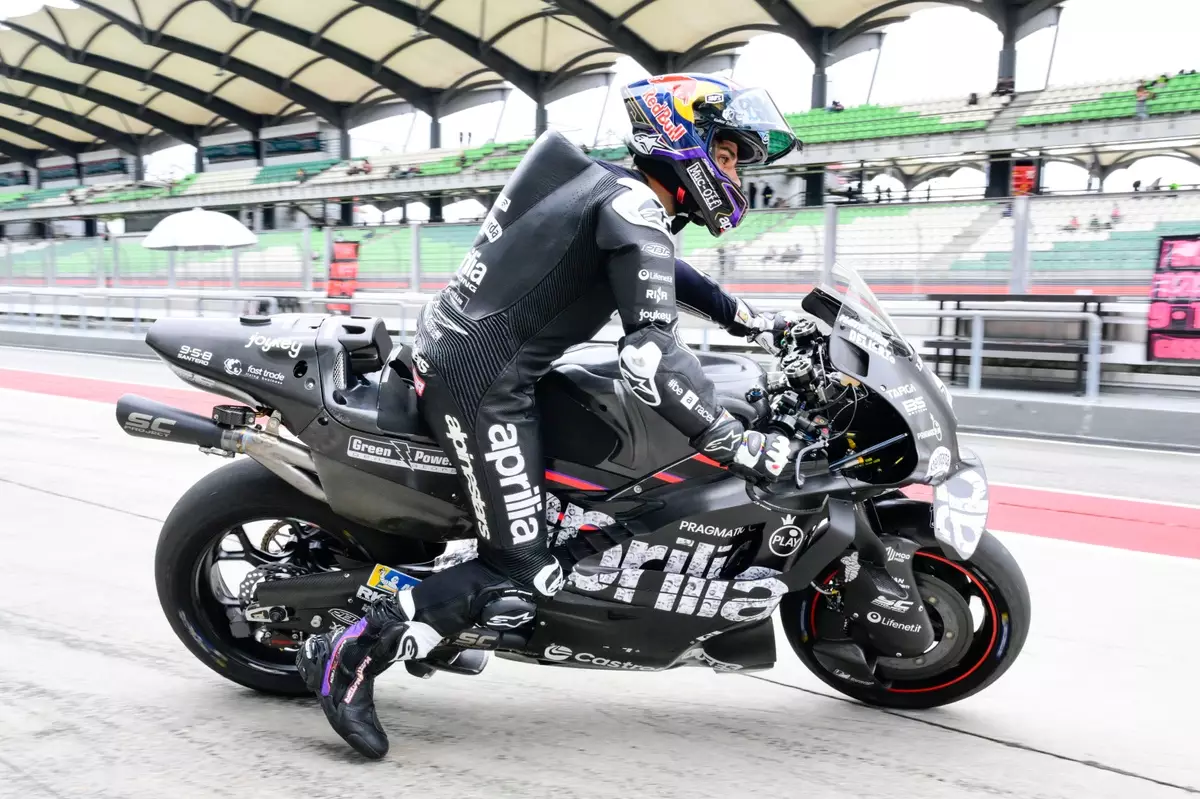The world of MotoGP has recently encountered a considerable safety quandary following a severe crash involving reigning world champion Jorge Martin during the Sepang pre-season testing. As the sport continues to evolve, such incidents draw attention to the underlying issues related to rider safety, tyre performance, and manufacturer accountability. Martin’s dramatic highside incident raises critical questions about the technology and materials involved, not to mention the handling of safety concerns by those responsible for maintaining racing standards.
The French tyre manufacturer Michelin has attributed Martin’s incident to a significant drop in tyre temperature, claiming that data indicated that the internal temperature of the rear tyre was 15 degrees Celsius lower than expected. This explanation has sparked considerable scrutiny and disbelief from Aprilia’s management. Massimo Rivola, the motorsport boss at Aprilia, has expressed skepticism regarding Michelin’s findings, particularly questioning the integrity of the tyre’s storage conditions. This discord highlights a growing concern over communication and data sharing between teams and tyre manufacturers, reflecting a potential fissure in their collaborative efforts to ensure rider safety.
Following the incident, Aprilia has publicly called for further dialogue with Michelin and a broader discussion among all teams. Rivola’s call for a constructive conversation indicates a desire to address the critical nature of the situation, one that is underscored by the increasing number of injuries among riders. His sentiments reflect a growing awareness that the dialogue around safety must involve all stakeholders, ensuring that the voices of those impacted – the riders – are front and center. It’s an indicative moment in MotoGP where the emphasis on safety protocols cannot be overstated.
The aftermath of the crash left Martin with significant injuries: a single fracture in his right hand and multiple fractures in his left foot. Having undergone surgery for his hand, there is a blend of relief and concern regarding his recovery timeline. Despite the successful operation, the uncertainty about his returning to the track remains problematic. The evaluations performed by experts like Dr. Xavier Mir offer hope, yet the reality of rehabilitation introduces an additional layer of complexity that both Martin and Aprilia must navigate.
This situation encapsulates the precarious nature of professional motorsport, where extraordinary physical demands meet the inherent risks of high-speed competition. It serves as a stark reminder that even the most elite athletes face challenging and life-altering moments that extend beyond mere performance metrics.
The ramifications of Martin’s crash extend beyond his personal injuries. The incident acts as a catalyst for wider discussions within the MotoGP community regarding tyre safety, technology management, and rider support. As teams prepare for upcoming events, the urgency to re-evaluate protocols and instrumentation becomes increasingly pressing. The call for meetings among teams and Michelin can act as a first step toward solidifying a structure where safety becomes a paramount focus.
Furthermore, the psychological impact on riders cannot be overlooked. Witnessing serious accidents can contribute to mental barriers that affect performance and decision-making in future races. By fostering an environment of transparency and collaborative safety measures, the sport can work to alleviate some of these concerns through proactive strategies that prioritize rider well-being.
Ultimately, Jorge Martin’s crash has unmasked significant gaps in the MotoGP safety framework, emphasizing that the current methodologies around tyre management and communication need reform. The discourse initiated by Aprilia is not merely about a single incident; it is about laying the groundwork for a safer environment for all riders. By addressing these issues head-on, the MotoGP community can transform this unfortunate event into a driving force for meaningful change. As the season progresses, the industry’s commitment to enhancing safety standards will be under scrutiny, and the need for a united front in tackling these challenges has never been more apparent.


Leave a Reply